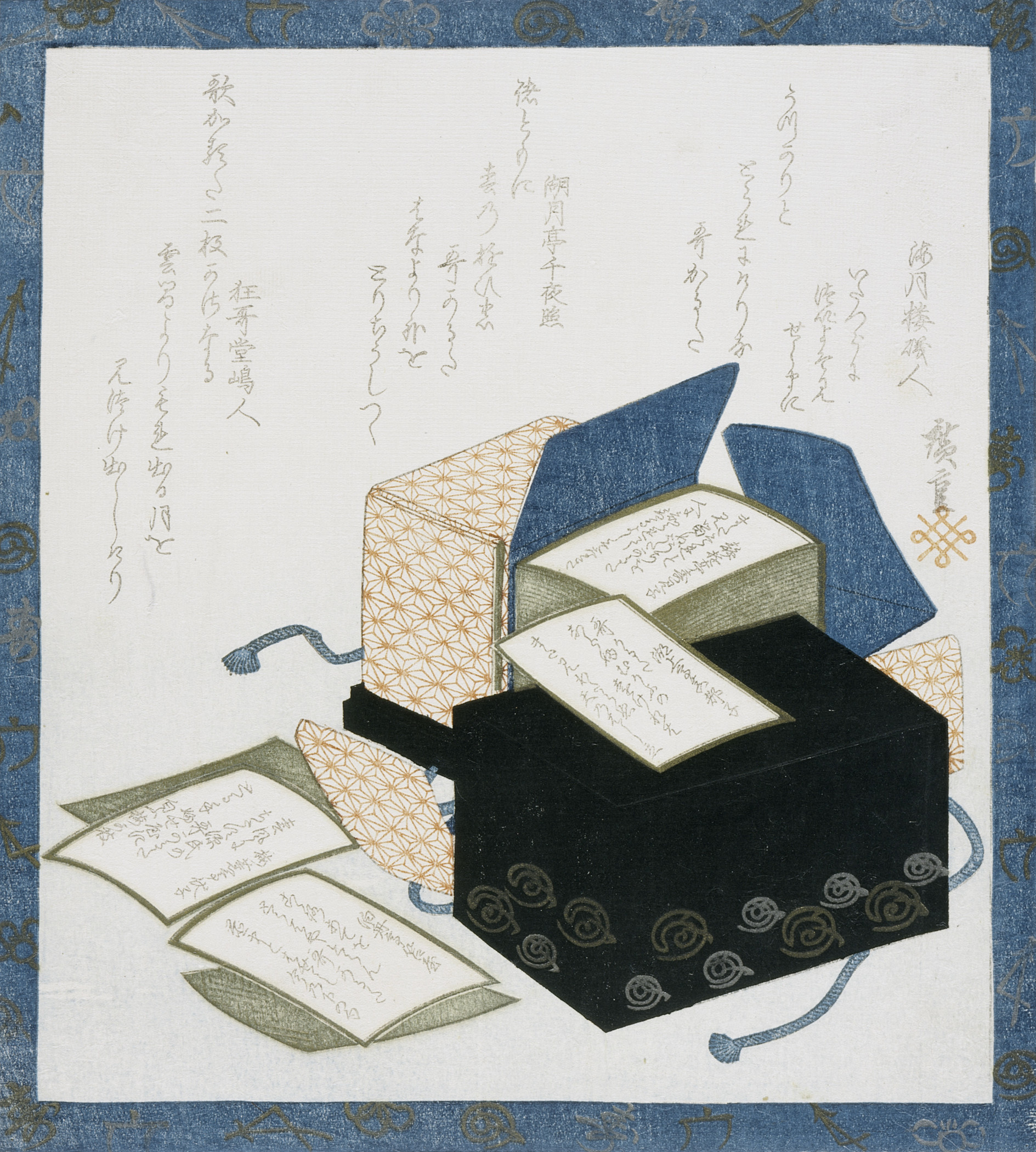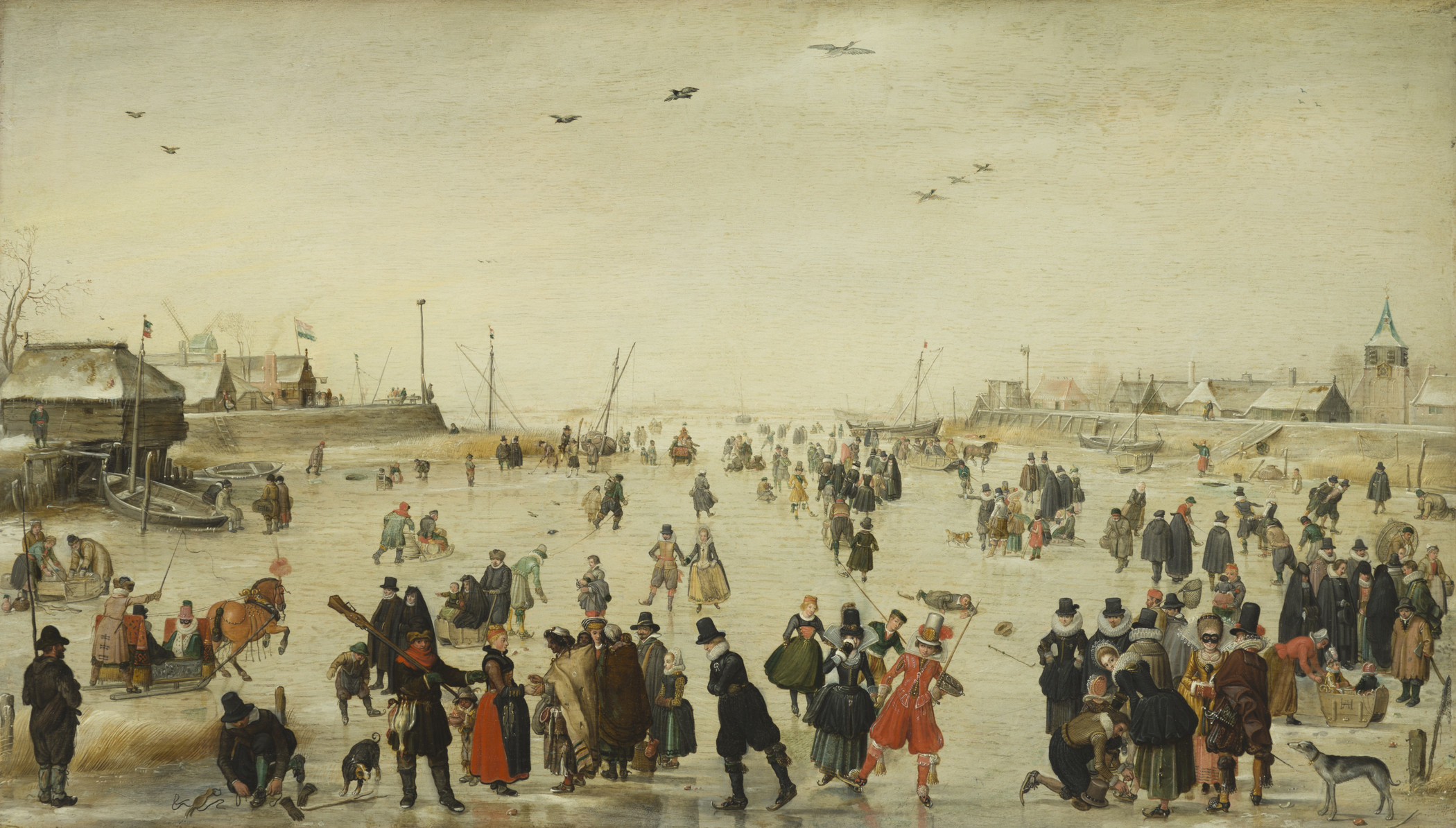By day I am a museum educator, but by night I am a writer and a poet. I love how poetry plays with words, rhythm, and even grammar to evoke emotions, tell stories, and capture a moment. Sometimes artists are inspired by poetry and sometimes poets are inspired by art. There's a special word for poems made in response to art. It's called ekphrasis poetry. Such a fancy word! (Fun fact: it comes from the Greek word for description.) Learning new words is my hobby, even if they are hard to say.

The artwork above by artist Utagawa Hiroshige was inspired by poetry. I am intrigued by the poems on cards and how they are stored in such a beautiful box.
In honor of April being National Poetry Month, today we'll write a collage poem inspired by an artwork in LACMA's collection.
Let's Get Started!
Supplies—no need to buy anything!
- Any paper with lines—like notebook paper, or a pad
- Pencil or pen—whatever you like to write with
- Scissors
- Glue stick
- One sheet of cardstock or construction paper
- An envelope (recycle one from the mail)
- Optional—a dictionary or thesaurus

Take a long look at the painting above, called Winter Scene on a Frozen Canal. There's a lot of activity! Or take another look at Utagawa Hiroshige's artwork above—I made a poem responding to his art about poetry! Feel free to change the prompts to fit the inspiration artwork.
Let's start by making a list on the lined paper. (Make space between the words because later you are going to cut them out.)
Write down:
- Five colors
- Two animals
- Five actions that people and animals are doing (action words are verbs)
- Five articles of clothing
- Three emotions
The more we look, the more we see! Go over your list and add anything you might have overlooked or forgotten to write down.
Look at your words to see if any can be more specific.
For example, red. What kind of red is it? Is it crimson, cherry, or Mars red? Brainstorm with a friend, your adult, or look it up in a dictionary or thesaurus. Add these updated words to your list.
Pick the word on your list that you like the best. Your favorite word.
Poets often say a word "calls to them." Is there a word in this list that is calling out to you? That word will be the beginning of your poem.
Now add connector words like:
- And
- But
- Out
- Under
- Over
Cut out all your words. Put them all in the envelope, except for your special word.
Take out your cardstock or construction paper. Place your special word at the top. Think of this word as an anchor or theme.
Take out words from the envelope one at a time and place them on the paper. Start to move the words around into the order you'd like them to be read. Put any words that you don't want in your poem back in the envelope.
Tip: Sometimes poets will write phrases that seem like they don't go together. These are called similes and metaphors. Here are some examples—the owl's eyes are like opals; my friend is a dragon; or that rock is as big as an elephant. Poets will also put opposite words together like prickly ice cream or fire ice.
Time to glue!
Once you have the order you like, glue down the words.
Now title your poem. Your title can be your special word or another word.
You've written a collage poem!
April is National Poetry Month, but if you liked this collage poem activity, you can do it again and again—any day or any month of the year!
If you share your artwork on social media, tag us at @lacma! We love seeing your art!
Join us on Sunday, April 11—and anytime after—to learn how to be a deejay with KCRW DJ Travis Holcome.
Discover other family-friendly art-making blogs on Unframed and check out our video content on LACMA's YouTube channel.






